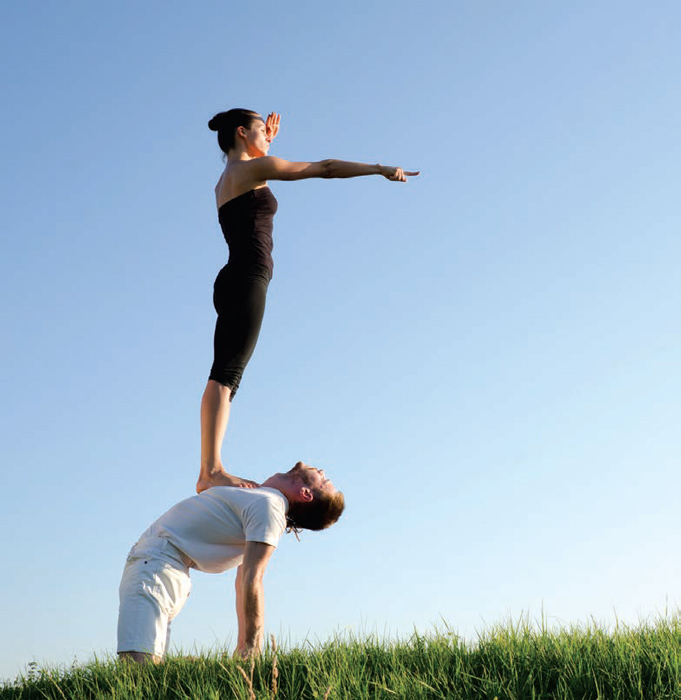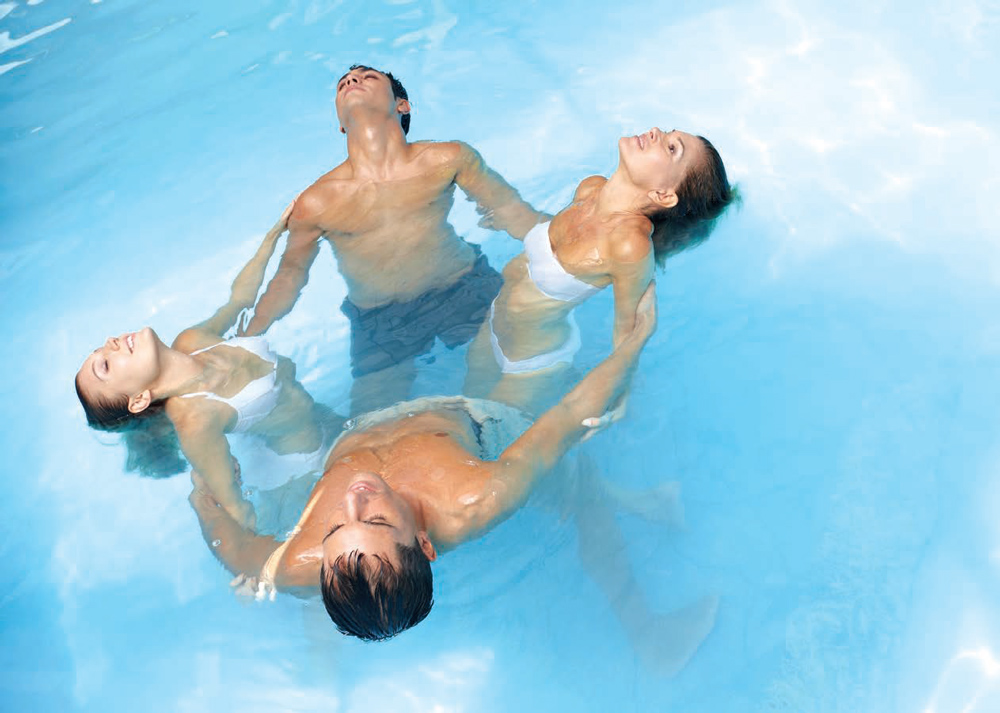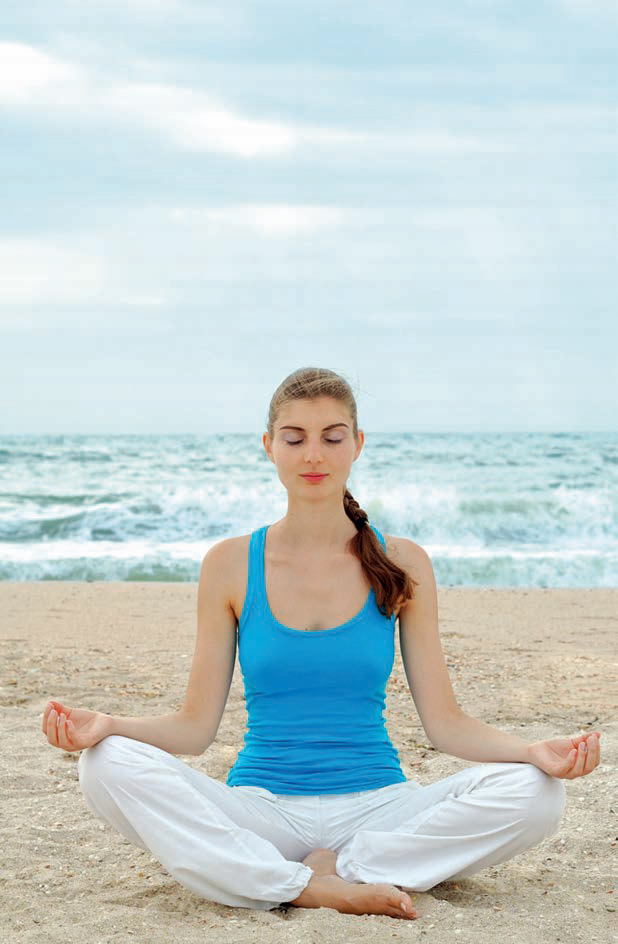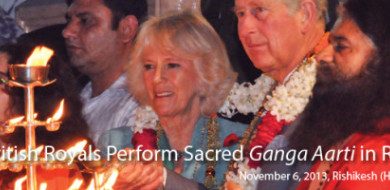The multiple ways in which yoga is offered truly shows how exceedingly flexible (pun intended) it is regarding the various styles available in the West, and it comes with as many diverse intentions as there are styles.
Some practice yoga primarily for the physical benefit, some for greater peace of mind, while others practice for a deeper spiritual connection. Yoga can be a physical, mental, and/or spiritual practice and the heightened popularity of it can be seen in the various ways it has come to be offered.
The ancient practice of yoga, dating back over 5000 years, has been modified to fit numerous (perceived) needs. its multiplicity only goes to show how powerful yoga is, especially regarding its ability to adapt to cultural (and market) differences over time while continuing to offer the same timelessly powerful benefits. Trends in Yoga a yogi drawn to sunshine, laughter, and practicing on a floating board (not to mention the thrill of the constant learning of losing balance and falling into water) may practice Stand Up Paddle Yoga. SUP, as it is more commonly known, is low impact on the joints and is wonderful for increasing balance and developing a stronger core. it’s a wonderful practice on vacation, or for those surfers and other water lovers to add to their yoga practice. Just don’t forget your sunscreen!
If you’re more of a gymnast or dancer and fancy hanging upside down in postures, resting in happy baby above ground in a fabric cocoon, then maybe Aerial Yoga is your métier!
This style centers on the use of a silky hammock. Practicing the postures suspended maximizes stretch, and strengthens muscles without overstressing vertebrae or compressing joints. one may begin to feel a bit like a Cirque Du soleil performer transitioning from one posture to the next. the hammock allows the yogi to hang upside down indefinitely, and Shavasana is never so relaxing as when a yogi is swaying cocooned in his or her hammock.

For the yogi who wishes to move beyond solitary practice, there is Acro Yoga. Working as a duo, one acts as the base and supports the other, called the flyer, in a series of aerial postures.
There is always a spotter making sure that both have the proper alignment necessary for the balancing. one lies on his/her back and supports the flyer’s weight with his/her extended legs. as children we often practiced this in our living rooms and little did we know we were actually practicing acro Yoga! Because yoga is traditionally a solitary practice, partner yoga allows the yogi to develop otherwise inaccessible connections with other practitioners; it represents one way to strengthen trust within yoga communities.
If you prefer to practice in the water rather than on it (as in SUP), Aqua Yoga might be worth trying. it is low impact and recommended for pregnant women, some disabled, and those with other limitations. Practicing in water obviously offers at least a small sense of freedom from gravity, is less stressful on joints and muscles, and affords the practitioner a feeling of ease and peace.
Though yoga and shamanism may seem, literally, worlds apart, upon closer examination one observes how remarkably compatible they can be. Joining the two practices results in Shamanic Yoga, which provides the opportunity to explore simultaneously the limits of the body and limitlessness of imagination. Yoga postures, guided meditation, ecstatic drumming and rattling all dovetail in a gentle maelstrom where a higher/ inner self occupies a realm of “power animals” and divine teachers, a realmwhere the yoga practice transcends all vestiges of “exercise” and each posture becomes both a healing act and a portal unto one’s better self. in the end, shamanic Yoga is about integration of the body, mind, and spirit, about nurturing oneself while learning to hear an inner voice from the realm of archetypes, what Carl Jung called the Collective Unconscious.
For some yogis, the idea of getting wet, hanging suspended in a hammock, balancing on a board, depending on another person, or integrating animal spirits is simply not appealing. such folks simply want to experience a physical challenge, and to sweat through a power-building “work-out.” For such yogis, Hot Yoga, yoga postures in a hot and humid room, a “yoga sweat lodge,” is the preferred practice. the practice room is heated anywhere from 98-105 degrees Fahrenheit (about 37-41 degrees Celsius). this style of practice varies, as some do the same practice each time in front of a mirror, with the same sequence and postures practiced each time leaving no room for modifying or personalizing a practice to fit the individual’s needs. those with heart disease, diabetes, or are pregnant or experiencing menopause may find the hot practice overwhelming, even dangerous; such individuals should follow a doctor’s recommendation.
If such heat and humidity sounds too daunting, maybe Naked Yoga will satisfy your needs for physical and inner freedom. There are records of yoga being performed naked as far back as the 8th century BC, and such practice was emblematic of the yogi denouncing everything. it began (im)modestly in the West in the 1960’s, although organized Naked Yoga classes only began to flourish around the mid-80s. at the heart of Naked Yoga is the acceptance of one’s own body in all its beauty and with all its imperfections it symbolizes one’s separation from (though not necessarily renunciation of) worldly possessions and assists some practitioners to calm their active minds, the “monkey minds; such a state is of course is the objective of all yoga practices. although beginning practitioners of Naked Yoga may at first find it difficult to concentrate, after about fifteen minutes (i’m told) this impediment fades.
Deaf Yoga was founded in 2007, and is a fine example of how self-defined communities are integrating yoga into the fabric of their singular lives and collective identities. The primary objective of yoga, in all of its Western multiplicity, is to practice nonjudgment, non-attachment and non-violence in action, speech, and thought; no matter the yoga fashion one adheres to, s/he finds that as s/he grows more dedicated to her or his practice, fashion as such blurs. one learns that the question “is that really yoga?” is incidental to the thousandsyears-old core values of the phenomenon. if we simplify our conception of yoga, its goal of creating greater balance in the body/ mind/spirit continuum, then anything that aids in creating such balance is yoga.
I had a discussion with swami Bodhananda saraswati about the definition of yoga. He said,“Dance is yoga, walking is yoga, talking is yoga, yoga is everything as long as there is awareness.”
“Dance is yoga, walking is yoga, talking is yoga, yoga is everything as long as there is awareness.”
Yoga means to yoke, to yoke the mind, body, and spirit as one, and technically when there is acute awareness of the breath and awareness of the mind, and we actively bring the mind, body, and spirit into balance, then we are actively living the essence of yoga. one not only needs to see the biceps growing, greater flexibility in the joints and muscles, and lowered blood pressure to experience the positive effects of yoga; of equal importance is how we are in the world, how we think, how we act; if our practice creates space between action and reaction, that is, if it transforms mere reaction into healthful response, then we are experiencing the positive effects of yoga. it doesn’t matter if we choose in our yoga practice to float on the water, or to be submersed in it; it doesn’t matter if we practice naked in a hot room or suspended, naked or not, from silky cloth while focused on our power animals; it doesn’t matter the nature of the community that sustains us as long as it is nondiscriminatory. How we practice is always a secondary issue. What is essential is what we do off the mat, away from our hammocks, out of or off the water with clothes on or not. How we respond, not react, to the world around us allows us to know, essentially, if our practice is serving our truest needs.

“So in yoga we prepare the body for the ultimate experience that’s found at the end of our asana practice, meditation, bliss, self-realization, and how we arrive at that comfortable seat is entirely up to the yoga practitioner. “

Nowhere in Patanjali’s Yoga Sutras is there a prohibition against fun. the multiplicity of contemporary yoga is a testimony to the fact that yoga can indeed be fun. With the various styles, hybrids of yoga offered, one can truly try yoga anywhere and it can fit any lifestyle. But is it really yoga? after experiencing a class, whether on a board, in the water, with a partner, in a sling, accessing spirit realms, or for the deaf community, if one arrives at knowing a deeper state of peace, then yes, it is yoga. the different trends of yoga, the styles offered, is simply up to the practitioner. What is important is the breath, the yoking of the mind, body, and spirit, combining them as one, and as long as this occurs we are truly practicing yoga. Patanjali states that yoga is our arriving at a comfortable seat. so in yoga we prepare the body for the ultimate experience that’s found at the end of our asana practice, meditation, bliss, selfrealization, and how we arrive at that comfortable seat is entirely up to the yoga practitioner.
 Krista Angelique began practicing yoga in 1999. She completed “The Heart of Yoga” training at Krishnamacharya Yoga Mandiram in Chennai, India. She’s studied Iyengar Yoga with Gabriel Halpern of Chicago, completed Yoga Teacher Training in California in Vinyasa Flow with Trevor Trice, Amy Caldwell and Rolf Gates.As a formerly trained modern dancer, she brings her love of movement to each of her classes.
Krista Angelique began practicing yoga in 1999. She completed “The Heart of Yoga” training at Krishnamacharya Yoga Mandiram in Chennai, India. She’s studied Iyengar Yoga with Gabriel Halpern of Chicago, completed Yoga Teacher Training in California in Vinyasa Flow with Trevor Trice, Amy Caldwell and Rolf Gates.As a formerly trained modern dancer, she brings her love of movement to each of her classes.







